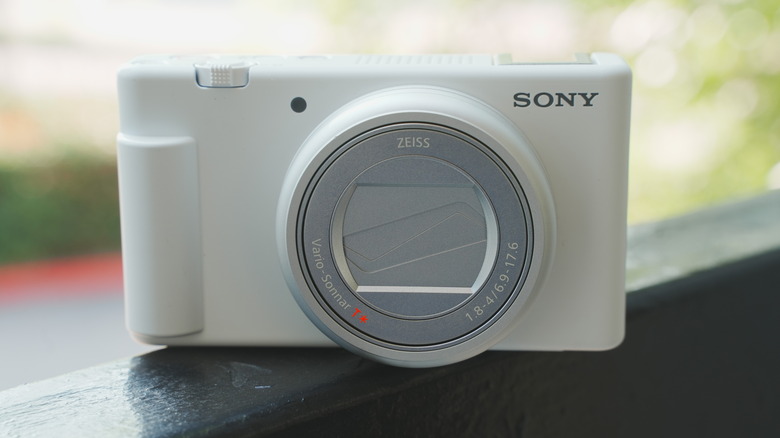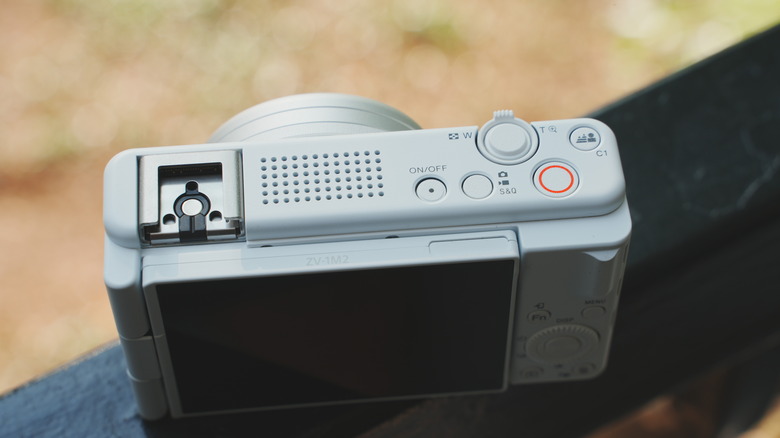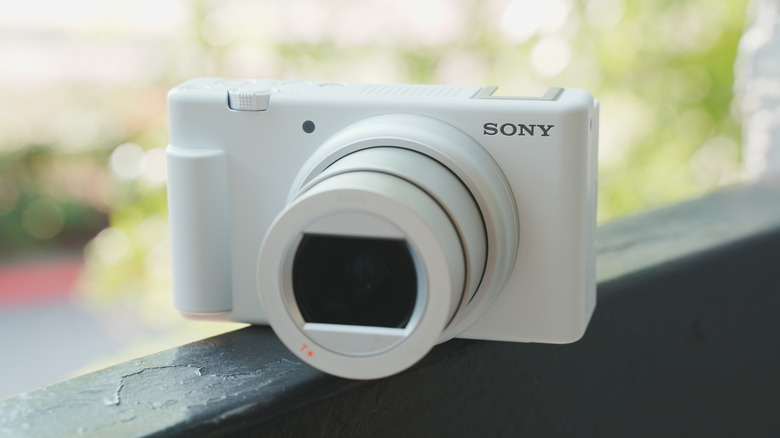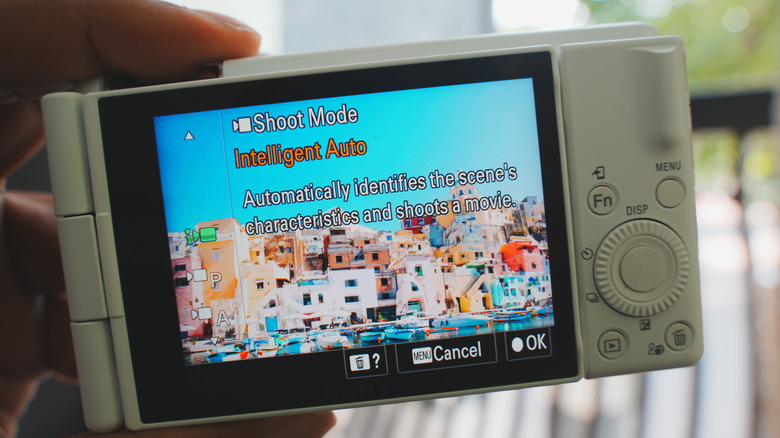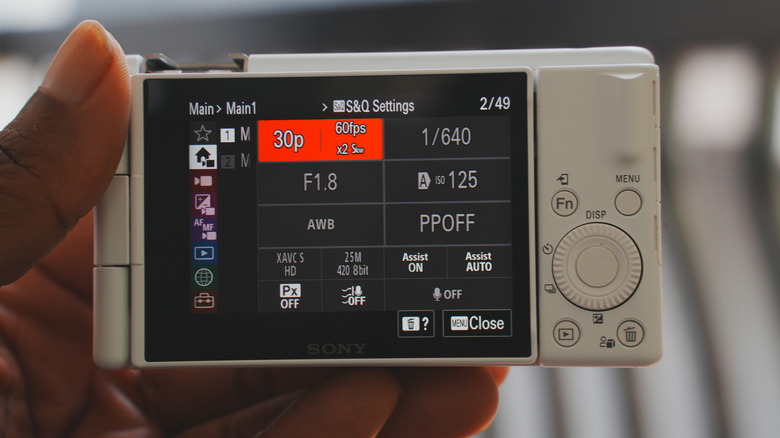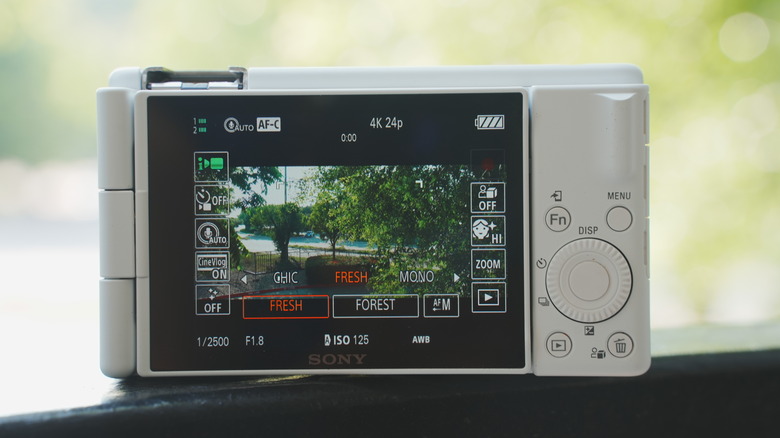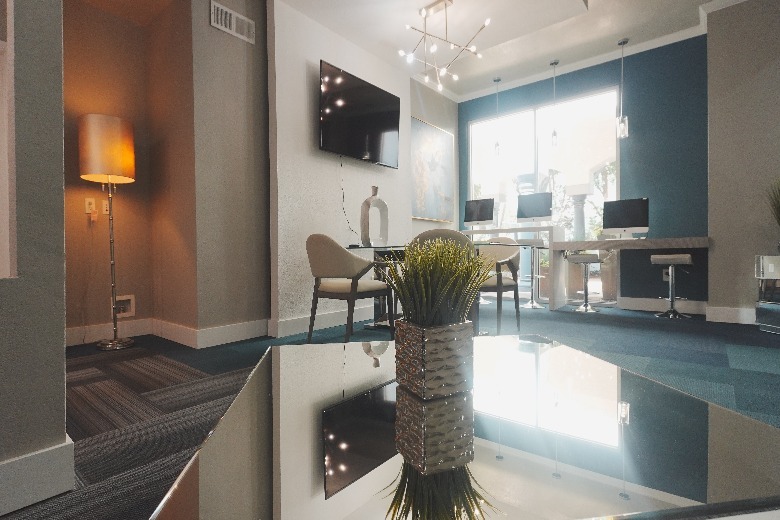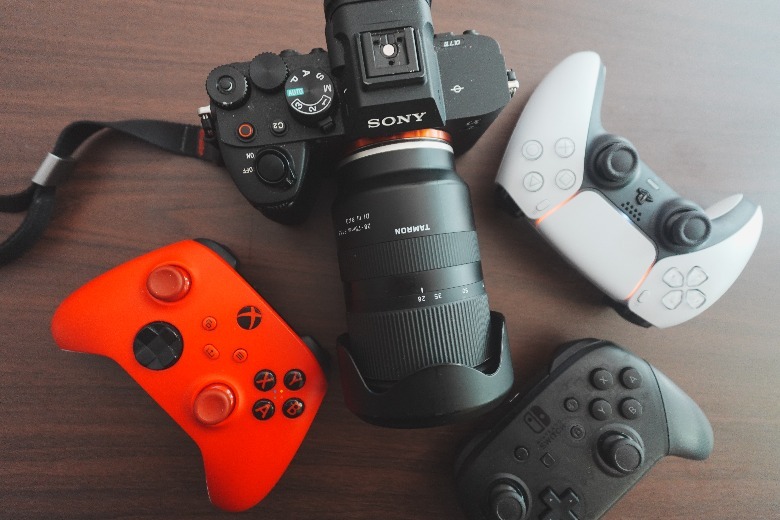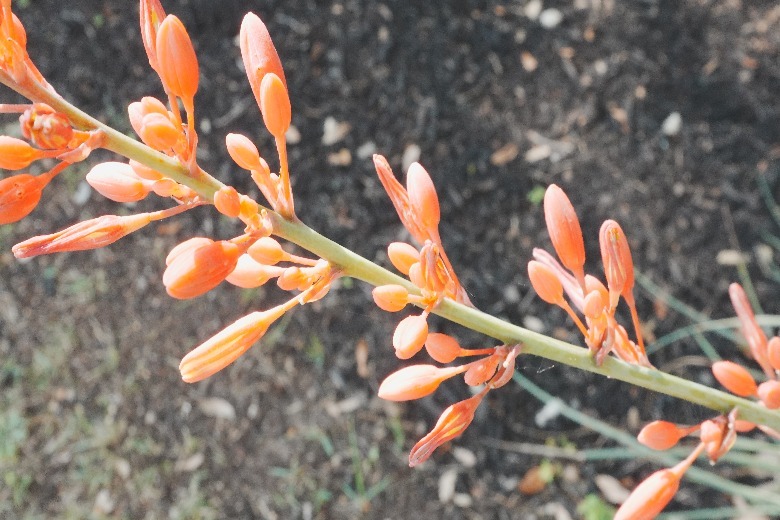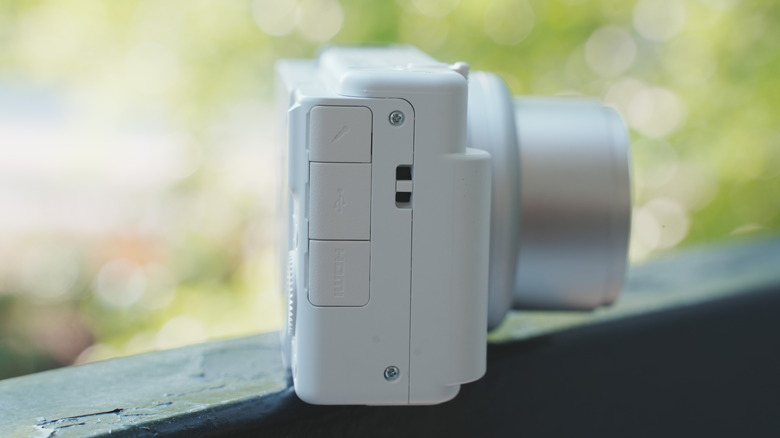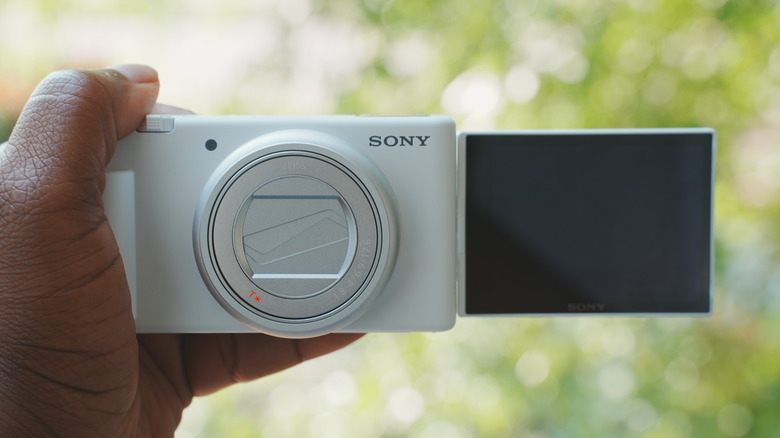Sony ZV-1 II Review: The Best Vlogging Camera Gets Better, With A Price To Match
- Heavily improved touch-based user experience
- Hands-off controls simplify shooting for every type of user
- 18-50mm focal range dramatically improves vlogging potential
- Retains crowd-favorite featherweight ergonomics of original
- Connectivity improvements
- A touch more expensive than ZV-1
- Battery life is still woefully short
- Touchscreen responsiveness inconsistent
The venerable point-and-shoot camera is currently grappling with an existential crisis that's loomed large for some time. Over the past five years, smartphone cameras have not just improved — but surged ahead. They offer simple, intuitive methods for capturing stunningly detailed moments in time and utilize an array of sensors and computational photography enhancements. This advanced technology has left the average content creator pondering the necessity of dedicated optics like the ZV-1 II (also called Sony ZV-1 Mark II, depending on who you ask) in their creative arsenal.
After all, smartphones boast large, responsive touch screens with user-friendly controls, extended battery life, and a slim profile that slides effortlessly into a pocket. Perhaps most compelling is the ability to edit and upload footage directly to the social media platform of your choice. This convenience negates the need for preemptive planning or the burden of carrying a separate camera bag for those potential must-shoot moments.
Yet, this is precisely why Sony created the ZV-1 II: to challenge your smartphone as the camera that's always at your side. With this second iteration, Sony has carefully refined the original, updating key controls and enhancing overall usability. A streamlined, touch-centric menu system plays a crucial role in this pursuit, but the ZV-1 II also boasts a suite of other notable improvements, ranging from quirky novelty features to truly practical utilities. A standout change is its more expansive field of view, the widest of all ZV cameras to date, housed in a compact package nearly identical in size to its immediate predecessor.
The ZV-1's doppelganger
Aesthetically, you'll struggle to find noticeable differences between the ZV-1 and its sequel. The plastic shell (made partly of recycled material) remains almost unchanged, barring new visual cues that identify the primary functions of the top buttons.
Though this dampens hopes for improved weather resistance, the camera's lightweight construction (it weighs just 292g fully equipped) is a boon for handheld videography. Its slim 1.83-inch profile easily fits into any bag or spacious pocket. Consequently, Sony has retained the physical nuances designed for secure handling: a subtle frontal ridge for finger placement and a small rear protrusion that accommodates your thumb.
The button arrangement also remains unchanged. The rightmost button reprises its role as a customizable background defocus switch, sitting right next to the adaptable record button. The power zoom rocker envelops the shutter button, both locked perpetually into their dedicated functions.
A non-configurable mode switcher also features, allowing transition between Auto Intelligent, Slow and Quick, and Manual modes. A strong multi-interface hot shoe resides on the opposite side of the directional three-capsule microphone array.
On the rear, the radial dial's functions and the trash button can be customized, with behaviors varying according to the selected shooting mode. The right edge conceals ports for common connectivity requirements — microphone input, micro HDMI, and an upgraded USB-C port — behind sturdy doors. To replace your SD card, you'll still need to access the battery bay located on the underside of the camera.
Finally, the perfect focal range for vlogging
The ZV-1 II addresses one of the ZV-1's most significant drawbacks. It now boasts an 18-50mm equivalent focal length lens atop the 1-inch stacked CMOS sensor, in contrast to the original's 24-70mm. While entirely serviceable, the latter often made vlogging a challenge, particularly due to Active SteadyShot's severe image cropping, which deprived users of valuable framing space.
It was a struggle including environmental context or multiple individuals in vlogs (let alone preventing your own face from monopolizing the frame) without extending your arm to uncomfortable lengths or utilizing an elongated hand grip. The ZV-1F's 20mm lens offered slight relief but lacked versatility. One commonly suggested option is to attach a wide-angle lens to an interchangeable lens body like the ZV-E10, but this increases your setup's weight, complexity, and cost — starkly contrary to the series' bespoke purpose.
The ZV-1 II's 18mm wide point is a delightful compromise, albeit at the expense of total zoom reach. This may only be an issue if you favor pronounced background compression in your compositions during planned shoots, or if you enjoy the aesthetic of telephoto photography (although wholly capable, this camera probably shouldn't be your first choice if you prioritize stills). Nonetheless, the Clear Image Zoom feature impressively recuperates some of that lost range digitally without impacting image quality deleteriously.
For those seeking an inconspicuous camera for impromptu talking headshots, you'll appreciate the compromise. Better yet, the change results in a subtly trimmer profile.
Inviting for beginners and vets alike
Don't be deceived by ZV-1 II's outward familiarity: it offers a vastly different user experience, largely enabled by a 921k-dot, 3-inch articulating touchscreen. This screen's functionality extends far beyond merely triggering tracking autofocus. Unfortunately, the touchscreen can seem less responsive than the smartphones it aims to compete with. My less-than-dainty fingers may bear part of the responsibility, as they often misinterpreted attempts at button pressing and option scrolling as focus-tracking commands.
Despite these minor drawbacks, the revamped interface is immeasurably more useful than its predecessor. By swiping from the left, right, or bottom edges, you can quickly access essential controls without relying on the rearward buttons, mirroring the functionality found on the ZV-1F.
Sony has expanded the suite of controls beyond existing options like the Product Showcase mode. New additions include controls for adjusting microphone directionality, a CineVlog button for swiftly toggling a 16:9 4K 24p shooting mode, and quick controls for modifying "brightness" (exposure), "temperature" (white balance), and your chosen creative look.
CineVlog, exclusive to this camera, offers a range of mood-setting options with unique creative looks and color adjustments to effortlessly enhance the aesthetic appeal of your footage. You don't need to be a color grading expert to paint pretty moving pictures.
Set it and forget it
You can relinquish direct control over these parameters, allowing the camera to manage all settings. The ZV-1 II is particularly attractive to beginners who prefer to be hands-off, but also appreciate the flexibility for precise adjustments as their proficiency improves. Sony's labeling of these features could be more detailed in some respects, but it's a considerable improvement over the original.
Even seasoned videographers can appreciate the streamlined operation. The camera adeptly analyzes the conditions of your scene and applies suitable adjustments in both auto and semi-auto modes. This is particularly noticeable when relying on autoexposure features that prioritize your face or any tracked object within the scene. It reacts impressively to gradual alterations in ambient conditions.
As for quick enhancements, the Product Showcase mode is back, offering single-touch modifications that enhance autofocus reliability, consistency, and transition speed when presenting an object to the camera. The Soft Skin button (for more aggressive skin smoothening than you may like) and the background defocus function (effectively maximizing your aperture for a greater depth of field) are also included.
The camera can also detect multiple subjects in the frame and stop the aperture down to ensure everyone remains in focus. While it's possible to manually replicate these actions by delving deep into the menus of almost any mirrorless camera, such tasks can be laborious even for technically savvy users, especially mid-shoot.
Crystal clear memories
Optically, the Sony ZV-1 II doesn't revolutionize the path blazed by its predecessor. In fact, it employs the same 1-inch, 20-megapixel Exmor RS stacked CMOS sensor (with an integrated 3-stop neutral density filter for counteracting bright conditions) and BIONZ X processor as the original. However, this isn't necessarily a drawback.
The camera delivers razor-sharp 4K recording at either 24 or 30 fps, and 1080p up to 120 fps for slow-motion recording. The ensuing quality far exceeds the standards of most social media platforms, including YouTube.
The microphone array easily amplifies and isolates your voice, even in loud ambient environments and windy conditions (as a bonus, there's a detachable windscreen included in the box). The camera can also automatically determine the correct polar pickup pattern to use based on what it sees, taking even more effort out of preproduction duties.
Granted, it doesn't offer 4:2:2 10-bit recording like the ZV-E1, but it also doesn't bear that camera's hefty price tag. The files carry sufficient data for vibrant color and high dynamic range, making them suitable for nearly everything short of Hollywood productions, especially when grading SLOG-3 footage. There's no need to dive that deep with most ordinary vlogging scenarios.
The camera's low-light performance is commendable, particularly between f/1.8 and f/2.8, with tolerable noise levels up to 6,400 ISO (12,800 maximum). Regrettably, the maximum aperture at the 50mm end now decreases to f/4.0, depriving you of approximately one stop of light compared to the original ZV-1 when fully zoomed.
Hybrid autofocus (combining contrast detection with phase detection) reappears and continues to acquire targets with outstanding speed and precision in most regular shooting situations, although you may experience focus breathing in extreme low-light conditions. With ideal lighting, real-time Eye AF reliably keeps you sharp without worrying about focus zones.
Perfect for candid snapshots and product photos
A professional photography camera this is not — the missing dedicated viewfinder might play spoiler there — but the Sony ZV-1 II handles stills quite well. You might find its reduced 20mm length on the longer end inconvenient for portraiture-style headshots, as it lessens the compression required to soften distracting backgrounds. Conversely, the 18mm focal length opens up intriguing compositional possibilities, but you'll introduce that weird face-warping distortion everyone hates.
Regardless of the degree of zoom, the photos exhibit impressive sharpness. There may be slight edge softness at the widest aperture compared to the center, but the difference is practically indiscernible for most viewing methods. You'll find the results consistently satisfying when you stop to f/8.
The camera nails autofocus 90% of the time on most stationary targets. You can manage your own spot focus point if needed, but that can be a cumbersome affair, and touch-tracking should cover you well enough when the autofocus is struggling to lock onto desired targets. Much like video, you'll suffer some severe focus hunting if you're 2+ stops underexposed, but that's true with almost any camera in this class. By the way, the minimum focus distance is remarkable at every zoom level. You can come within less than an inch, giving you decent (but not great) macro potential.
The ZV-1 II is well-equipped for most typical snapshots, and it even dependably captures fast-moving action thanks to its extraordinary 30 fps burst, available even while shooting RAW. The buffer capacity offers bucketloads of room, accommodating over 150 images before requiring clearance. It processes the backlog swiftly, even with a V30 SD card.
Budget for extra batteries
Regarding battery life, expect a maximum of 40-55 minutes of 4K video recording. This limitation makes it challenging to document, for example, a three-hour excursion without extreme selectivity or additional batteries. This is the unfortunate trade-off for maintaining a slim battery pack and overall compact design, but the accelerated charging capability of USB-C helps to mitigate this.
The USB-C port also supports UAC/UVC, enabling double life as a PC webcam. Moreover, it provides concurrent passthrough power and charging, allowing continuous filming as the swiftly draining battery replenishes.
Sony has enhanced both wired and wireless connectivity. The Wi-Fi radio now benefits from a 5GHz upgrade to bolster connection quality when remotely capturing and browsing files through Sony's novel Creators' app. Sometimes, the camera and smartphone needed an extra handshake before they finally linked, but they rarely dropped signal from there.
While we're on the ZV-1M2's technical niggles, we're glad to report that heat generation never interfered with usage during testing in mid-80-degree conditions, not even prompting a warning. Admittedly, the high-temperature auto power-off setting was set to "high" for most tests, but there's no inherent risk in doing so. While the plastic casing may become mildly warm over time, it won't cause discomfort to your fingers or damage internal components; the ZV-1M2's stability is commendable in all respects, but be wary of potential issues if you anticipate using it under a 100-degree-plus sun.
Nigh-perfect upgrades for content creators
Though somewhat imperfectly, the Sony ZV-1 II amply removes excess friction that would otherwise make you rethink hitting the record button. My primary camera is a Sony A7IV, and despite my admiration for its power and versatility, there are numerous instances where I'd prefer to carry the smaller device. It serves as an excellent auxiliary to my main camera, and I'd readily use it for spontaneous content creation.
That's mainly owed to its portability and swift adaptability in diverse shooting scenarios. While I could replicate nearly all functions of the ZV-1 II with the A7IV's plethora of customizable buttons, dials, and recall shooting modes, it would require considerable preliminary effort. Even after this, invoking common vlogging functions is simpler and faster on the ZV-1 II due to its newly introduced touch-based user interface.
Should you invest in one? Absolutely: if you're an on-camera content creator seeking a compact, affordable kit that won't strain your arms or back, this camera should top your comparison list. Even current ZV-1 owners should consider upgrading. The optical improvements from the original model may not be overwhelmingly revolutionary, but other factors have kept it atop numerous best vlogging gear lists for three years running, and the enhanced accessibility in this upgrade justifies the minor financial loss to trade up.
If you're a complete vlogging beginner shopping anew, at $499.99, the ZV-1F may be more appropriate if everything you do goes wide. The ZV-1 II, slightly pricier than the original's price at $900, arrives this June.
